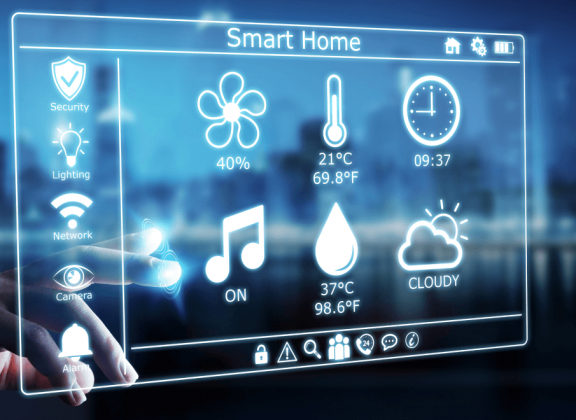In the rapidly evolving landscape of connected homes, devices are no longer confined to single-use roles. A notable example is the modern media player, which has grown far beyond its original function as a simple streaming device. Today, media players can serve as fully functional smart displays—aggregating and presenting key information such as schedules, surveillance camera feeds, and weather forecasts. This convergence of features turns a standard television into a proactive information hub, enhancing daily living in subtle but powerful ways.
Expanding the Role of Media Players in the Smart Home
The traditional use case for IPTV boxes and media players centered around on-demand entertainment. These devices were designed to decode and play media, nothing more. But the increasing demand for smart home integration, coupled with technological advancements in these devices, has redefined their capabilities. Current-generation media players boast multi-core processors, extensive connectivity options, and the flexibility of open-source or Android-based operating systems.
This expanded capability has paved the way for integration with everyday utilities. No longer just content terminals, these devices now function as interactive dashboards that can display real-time data and respond to contextual needs in the household. The integration of calendars, security systems, and weather data is not a futuristic concept—it’s already achievable with the right applications and settings.
Integrated Calendar Access for Smarter Scheduling
Among the most practical enhancements available is calendar integration. This feature transforms the media player into a central scheduling tool, displaying synced calendar entries from platforms like Google, Outlook, and iCloud. Whether tracking personal appointments or coordinating a family’s daily routine, calendar visibility on the main screen adds an extra layer of clarity to time management.
Users benefit from real-time updates across devices, allowing for seamless schedule synchronization. Meeting reminders, shared events, and daily agendas can be displayed as overlays or persistent widgets. The visual nature of a large screen makes it easier for households to coordinate plans and responsibilities without relying on paper planners or separate smart assistants.
Live Camera Viewing for Increased Awareness
Smart surveillance is increasingly becoming a household norm, and media players are now part of that trend. With support for live camera streaming via IP protocols or cloud services, a media player can provide on-demand access to various camera feeds throughout the home. This capability is particularly useful for monitoring entry points, keeping an eye on children or pets, or simply verifying that all is well without needing to switch devices.
Imagine pausing your movie to check who is at the front door or monitoring a sleeping child while cooking dinner. These scenarios are no longer confined to homes with high-end, standalone smart displays. With compatible apps and minimal setup, media players provide similar functionality through a single interface, making surveillance and convenience more accessible to a wider audience.
The implementation is straightforward: users install compatible applications and link their camera systems through secure streams. Once set up, the media player can provide full-screen or split-view access to multiple live feeds. Alerts from smart cameras—such as motion detection—can also be configured to prompt the media player to switch displays or send notifications, creating a responsive visual security system that’s always within reach.
Real-Time Weather on Your Main Screen
Weather data may seem secondary in comparison to media or security features, but its presence on a main display contributes significantly to daily efficiency. Modern media players can retrieve and present hyperlocal weather forecasts using services like OpenWeatherMap or national meteorological feeds. These updates can include temperature, precipitation forecasts, UV levels, wind speed, and even air quality indexes.
Displaying this information through widgets or home screen dashboards allows users to quickly assess the day ahead—without having to check a phone or smart speaker. Especially useful during morning routines or while preparing for travel, this integration turns passive screen time into a moment of practical awareness. For families, it means fewer surprises and better daily planning at a glance.
Personalization and Unified User Interface
What makes these integrations truly valuable is how well they fit within a unified user experience. The interfaces of modern media players support customizable layouts, offering tiles, overlays, or full-screen modes for different types of content. Users can prioritize what matters most—be it a live feed from the front porch, the week’s agenda, or current weather conditions.
This environment is further enriched through automation tools like IFTTT, Tasker, or Home Assistant, which allow users to script routines and interactions between smart devices. A calendar event could dim the lights and launch a video call app, or a detected visitor at the door could temporarily pause a movie and bring up the camera feed. Such interoperability enhances the smart home’s cohesion and gives users more control with fewer steps.
A Glimpse into the Future of Media Player Utility
The development trajectory of media players points toward even deeper integration with smart environments. With voice assistants, biometric recognition, and contextual dashboards gaining popularity, these devices are positioned to offer increasingly personalized experiences. Media players could soon become not just secondary displays but primary points of interaction in the home—especially in rooms where traditional smart displays are absent.
For retailers and distributors, this evolution presents new marketing and bundling opportunities. Offering pre-configured kits with recommended camera models, dashboard applications, or weather widgets can simplify adoption for less tech-savvy users. Highlighting the multifunctional nature of these devices also differentiates them from standard streaming boxes in a competitive market.
Media players have transitioned from being entertainment-only devices to becoming powerful smart displays that centralize essential information. Through calendar synchronization, live camera integration, and continuous weather updates, they offer a compelling mix of convenience, safety, and control. As home environments grow more connected, the value of a device that bridges entertainment with real-time awareness becomes increasingly clear. For today’s consumer, the media player is no longer just a viewer—it’s an organizer, a watcher, and an informant, all in one compact, efficient package.
